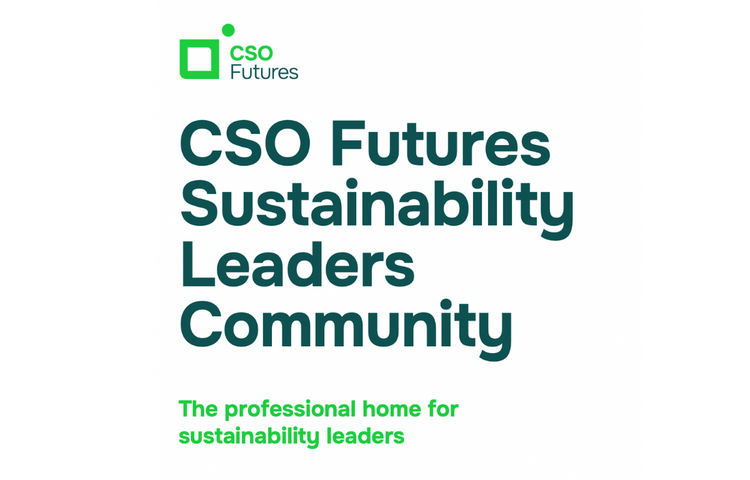Voluntary Carbon Market Integrity Initiative: ‘We need corporates to take action’

Carbon market integrity initiatives have laid out frameworks to make voluntary carbon markets more transparent. Now they need companies to help demonstrate their impact.
In the past couple of years, the Voluntary Carbon Market Integrity Initiative (VCMI) and the Integrity Council for Voluntary Carbon Markets (ICVCM) have been working at full steam. Faced with growing outroar about the real vs claimed impact of carbon offsets, they took on the task of developing methodologies to ensure that voluntary carbon finance mechanisms actually deliver their promised impact on the climate, people and nature.
This year, their work finally came to fruition: in June, VCMI published its Claims Code of Practice to lift the quality of companies’ climate claims, particularly when based on offsets, and in July, ICVCM complemented this work with the Core Carbon Principles, defining a set of minimum criteria for carbon credit projects.
Speaking to CSO Futures, VCMI’s Director of Policy and Partnerships Lydia Sheldrake called for Chief Sustainability Officers and their companies to start using these sets of rules to demonstrate the impact of a “reformed, trusted voluntary carbon market”.
She said: “We've been working on these frameworks to bring integrity, and I think the critical thing now is action. The time is now to really demonstrate how this has impact, and for that we need corporates to take action. That's really where there's a critical role for CSOs in organisations to be part of that collective action momentum.”
Additional VCMI guidance to be published in November
Since June, VCMI has been working on additional guidance, to be published in November. It includes a monitoring, reporting and assurance that will enable companies to start making verifiable claims by the end of the year.
“Our top priority now that we have the code is to bring it to life now, rolling it out with adoption among companies, and setting the stage for that to ramp up so it gets used as widely as possible to the benefit of global climate action,” Sheldrake added.
VCMI actually kicked off its early adopters programme on the day of the interview (October 5), working closely with a group of companies that want to accelerate their first claims – though the initiative does not plan to publicise the name of these companies.
How to use the VCMI Claims Code of Practice
Companies need to meet four foundational criteria to be able to make a VCMI claim:
- maintain and disclose an annual greenhouse gas emissions inventory;
- set and publicly disclose SBTi-validated near-term emissions reduction targets with a commitment to reach net zero emissions by 2050;
- demonstrate that the company is on track to meet a near-term emissions reduction target;
- and demonstrate that its public policy advocacy supports the goals of the Paris Agreement and does not prevent ambitious climate regulation.
After implementing meaningful carbon reductions, they can select a VCMI claim to make about their use of carbon credits, with three different claim tiers depending on the percentage of remaining emissions offset through the purchase and retirement of high-quality carbon credits: silver for 20% to 60%, gold for more than 60% but less than 100%, and platinum for 100% or more.
The code provides an extensive definition of what high-quality credits are, and states that companies should prioritise CCP credits as soon as these become available. Additionally, Sheldrake explained that all VCMI claims will be “fully third-party assured”.
Carbon market integrity: towards ‘high value, high impact’
With greenwashing claims on the rise, Sheldrake believes there’s a clear need for more transparency on “what good looks like when it comes to the use of carbon credits as part of a net zero transition”. She sees the VCMI Claims Code of Practice, which was developed through multi-stakeholder consultations with civil society organisations, indigenous peoples and local community representatives, as the rulebook necessary to achieve this.
She noted that voluntary carbon markets so far have been rather small and immature, but that recent criticism is helping them improve to reach their full potential as “a critical tool to mobilise capital and finance and get it where it needs to be most on the ground to support people, nature and additional climate solutions”.
Sheldrake hopes that recent integrity efforts by her organisation and ICVCM will help “transform voluntary carbon markets into a high-value, high-impact, trusted and much more mature looking market” that will complement mandatory carbon mechanisms that are growing around the world. (The EU’s Carbon Border Adjustment Mechanism just entered its transitional phase, and Brazil is currently working to pass regulation for the creation of its own cap-and-trade system.)
“There are various different ways in which voluntary action can link to these compliance systems. There's an opportunity for activity under voluntary carbon markets to help build the capacity of project developers and policymakers to generate the systems and the infrastructure to support and channel benefits from carbon finance mechanisms. And I think that then really provides fertile ground to accelerate the transition to regulation,” she added.







Member discussion